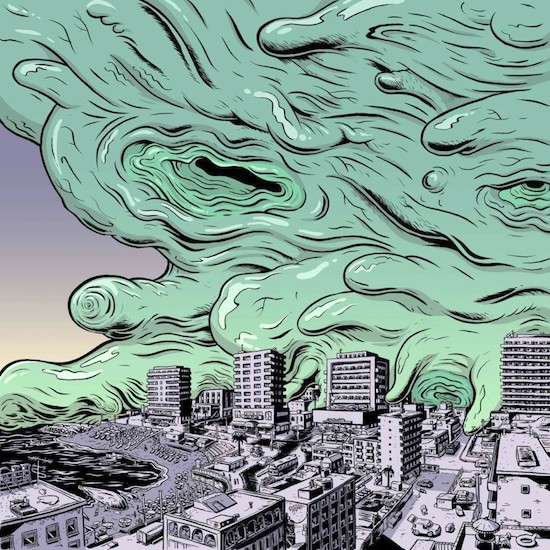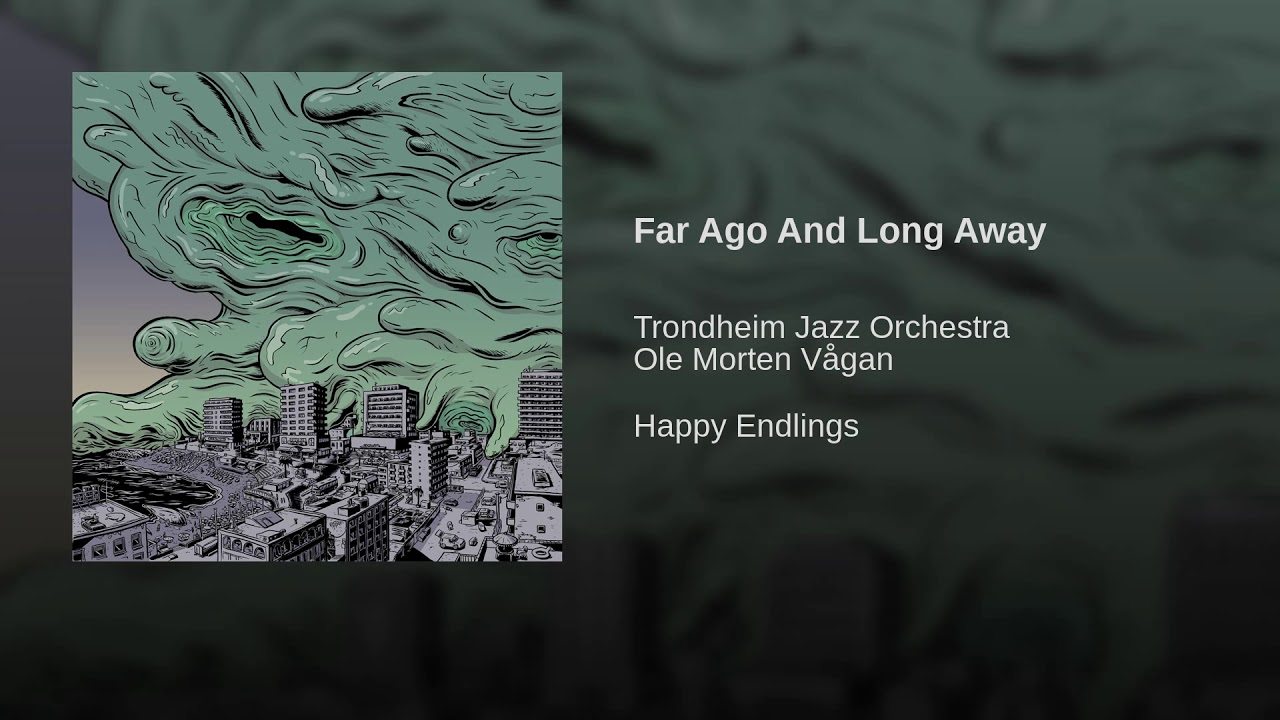endling / (plural: /endlings/)
noun
-
- The last known individual of a species or a subspecies which therefore becomes extinct upon its death.
Flu Hartberg’s sleeve art for this hefty slab of joyous end times absurdism depicts upright sloth-like creatures populating a rundown coastal resort as they swill through grubby leisure park pools and mill aimlessly around the deserted lobby of a huge crumbling hotel complex. They appear ready for forward movement, festooned with holiday satchels, baseball caps and sunglasses, yet aimlessly wander the vacant wreckage with little sense of direction and unheeding of the vast green malevolent smog approaching to smother their endless holiday plans forever. Are these creatures what we will become? Or already are?
These endlings, living like locals yet existing in unhappy isolation from each other and their surrounds, seem oblivious to any sense of community. Large jazz outfits such as Trondheim Jazz Orchestra have become increasingly prevalent and relevant in recent years with groups such as Fire! Orchestra or Large Unit taking their cues from working, whether through composition or spontaneity, within an ethos of communal solidarity. There is a spirit of utopian idealism which runs from Sun Ra’s Arkestral resolve through to the myriad of coalesced possibilities posited by collectives such as Glasgow Improvisers Orchestra or London’s Mopomoso.
Composed by bass player Vagan for the 18 year-old TJO, Happy Endlings gleefully repudiates any inferred dismal dilapidations of our possible futures through a sequence of propulsive and grand pieces evoking a skewed Bernstein while revelling in the sheer joy of co-operative music-making (albeit helmed by Vagan’s guiding structure). Passages of spikily rough improv, as individual players scrape up against one another in playful aggression, can swiftly escalate into full-blast orchestral squall before settling into a gently melodic wash evoking storms passing overhead.
Despite being comprised of 13 players, including Stale Storlokken and Sofia Jernberg, no one performer dominates leaving the material open to interpretation by a fully functional consolidation of the musical ensemble. This is a recording of life-enhancing drive and determination which leaves isolationist endlings mired in their own hollow solipsism. Is this sense of community all an illusion proferred by artistic aims? If so, we can at least live in dreams and hope.



